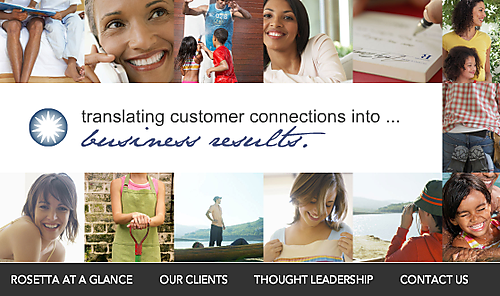 How do you build a top digital agency?
How do you build a top digital agency?
In July Rosetta announced the acquisition of interactive agency Brulant, where I am a partner in the Consumer Product and Retail practice. The first couple of days since the announcement have been some of the most fun in my career. The two firms build a compelling value proposition when combined, and I’ve spent a better part of those two days calling clients and friends to talk about it.
Acquisitions and mergers have negative connotations to many folks. They can mean personnel conflicts, culture clashes and diluting of the “juice” that makes either one of the parties successful – not to mention distractions to high performing project teams. I have friends who have been through it in the digital industry (think large conglomerates eating up smaller independent agencies), and there are many horror stories. In stark contrast, being a part of this merger is ripe with excitement and promise. We remain independent, and the services each agency provides complement each other.
“We are creating one of the nation’s biggest interactive agencies which will allow us to grow current relationships and build new ones quite dramatically,” said Chris Kuenne, Rosetta’s founder, chairman and CEO. “The interactive marketing landscape is rapidly shifting from mass to personalized targeting and from fuzzy equity measures to precisely measured, managed and optimized customer relationship economics.”
There is a science behind the shift from traditional media to targeted, personalized marketing, and Rosetta has figured it out. Look at their client list– these are advanced organizations where how they market is a key differentiator in their success. Infuse that with the execution capabilities of the teams I’ve watched deliver at Brulant, and it’s a powerful combination.
“You put your chocolate in my peanut butter!”
Rosetta is technically acquiring Brulant, but in reality the firms complement each other. The breadth of Brulant’s interactive services in customer experience, acquisition marketing and technology implementation are the “chocolate” to Rosetta’s marketing strategy and personalized targeting offerings “peanut butter.” The value proposition of bringing those capabilities together, along with the ever growing significance of the online channel and its influence on other channels, is a compelling service offering that puts Rosetta in a unique place in the market. (I’m actually writing that because I believe it; it wasn’t spoonfed by our marketing team, I promise.)
Hey, that sounds great, but we have a lot of work to do. On the first day of the announcement being public, I had the privilege of sitting with one of our top clients and the CEOs of both Brulant and Rosetta. It was very clear in the conversation that the value proposition can be applied right away, and I will be spending lots of time with the “legacy” Rosetta team to understand their offering more in the coming weeks.
New opportunities
For me personally, this provides an opportunity to work with talented people and expand my professional horizons up the value chain. Being in Boston and working on several clients in the New York City area, I am thrilled to see the expansion in the Northeast. This is also the first time I have been through an acquisition and watched an integration team get up and running. I look forward to participating in building the new organization. Can’t wait to see it in action and share what I learn, and I look forward to working with the Rosetta team.
Have you been through an acquisition? What are some pitfalls you’ve seen? How would you advise we keep the momentum going through this exciting time with all of the “buzz”?
Check out Rosetta.com for more information.


![Reblog this post [with Zemanta]](https://i0.wp.com/img.zemanta.com/reblog_e.png?w=730)

 Alternate payment methods (APM), in eCommerce terms, are ways to complete a transaction without using the normal credit card authorization process. For the past couple of years Rosetta has completed a quick study of a hundred leading online retailers using the big players in this space.
Alternate payment methods (APM), in eCommerce terms, are ways to complete a transaction without using the normal credit card authorization process. For the past couple of years Rosetta has completed a quick study of a hundred leading online retailers using the big players in this space. 

 In late October, I got a first hand glimpse into how the web is taking on traditional newspapers. While in Dallas for Forrester’s Consumer Forum, I was grateful to be invited to drop in at the offices of the
In late October, I got a first hand glimpse into how the web is taking on traditional newspapers. While in Dallas for Forrester’s Consumer Forum, I was grateful to be invited to drop in at the offices of the 
